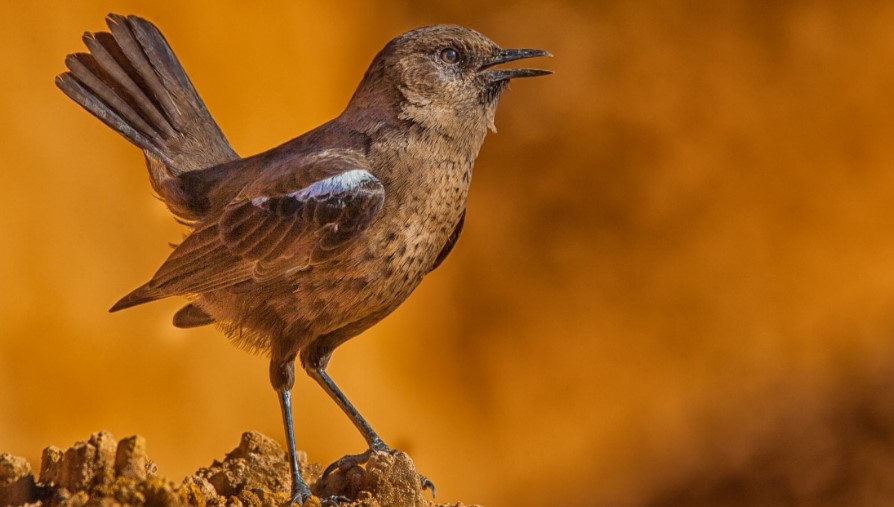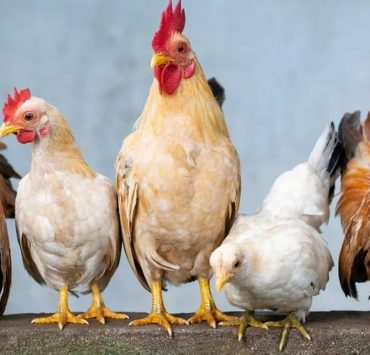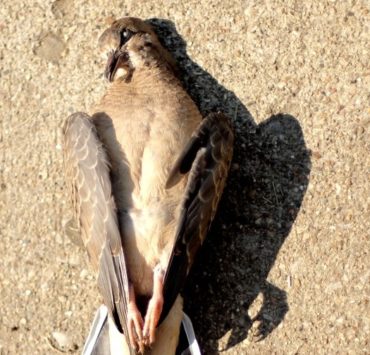
If you’ve heard of Fungal pneumonia, Brooders pneumonia, or Mycotic pneumonia, these are all different names for Aspergillosis. It is a non-contagious respiratory disease caused by a fungal species known as Aspergillus that affects chickens, turkeys, ducks, waterfowl, and several different kinds of bird species.
Young birds between seven and 40 days old are the most susceptible, although older immune-suppressed birds can also develop an infection. The real question is – Can Aspergillosis be cured once your birds become infected?
Here’s everything you need to know about the disease.
Causes of Aspergillosis in Birds
The most common species of the fungus responsible for the disease is Aspergillus fumigatus, Aspergillus flavus, and Aspergillus niger. These microscopic spores thrive in warm and moist places and are found everywhere, from nesting materials to soil and moldy foods.
Keep in mind that the Aspergillus fungus is an environmental contaminant, so it doesn’t spread from bird to bird. Instead, infection develops when birds with a weakened immune system inhale the spores of the fungi.
A bird with a healthy immune system will not get infected even when exposed to large numbers of spores. The most common opportunistic Aspergillosis causes include:
- Bedding that consists of walnut shells and corn cobs
- Extended antibiotic use
- Immune suppression due to infection with concurrent diseases
- Inadequate cage cleaning
- Poor husbandry, hygiene, and overall housing practices
- Poor ventilation
- Vitamin A deficiency, which is common in birds on all-seed diets
Once the spores are inhaled, they make their way into the lungs and air sacs (the thin avian lung extensions) of the birds. Aspergillosis develops gradually and may not be immediately apparent in the early stages of infection.
Aspergillosis Symptoms
How can you tell if your bird has the disease? Birds with Aspergillosis may exhibit a wide range of very non-specific symptoms.
Because of this, an avian vet will likely want to perform several tests to conclusively diagnose the disease. An Aspergillosis infection can either be acute or chronic.
Acute Aspergillosis
Acute infections usually occur in infant birds, and symptoms usually develop within three to five days after exposure. The most common sign of acute Aspergillosis infection is rapid gasping (open-mouthed breathing) due to the gradual obstruction of the air passages.
As it continues to progress, young birds will often exhibit several of the following symptoms:
- Blindness
- Diminished appetite
- Emaciation
- Extreme drowsiness
- Eye swelling
- Increased thirst
- Twisting of the next to one side (torticollis)
Acute Aspergillosis progresses rapidly and may cause death within days.
Chronic Aspergillosis
The chronic form of this disease usually affects older birds or those with a weakened immune system. Common signs include:
- Decreased appetite
- Fluffed/raffled feathers
- Gasping
- Lethargy
- Shortness of breath with minimal exertion
- Progressive weight loss
- Reduction in energy levels
- Respiratory noises
- Tail bobbing
While it is primarily a disease that affects the respiratory system, Aspergillosis may go through the air sacs and enter the body cavity. It may then travel through the bloodstream and affect other organs of the body.
As a result, some of the less obvious signs of an Aspergillosis infection may include gastrointestinal symptoms like regurgitation and diarrhea, or neurological symptoms like wing-droop, general weakness, lack of muscle coordination, and even tremors.
If your bird exhibits any of these symptoms, get in touch with an emergency avian vet as soon as possible.

Aspergillosis Diagnosis
Because the symptoms of this disease are quite similar to those of other avian illnesses, your veterinarian will likely ask you for information on the symptoms you’ve observed so far and when you first noticed them.
They’ll also ask you to provide a bit of background on your bird’s diet and husbandry practices. They’ll then measure your bird’s weight and perform a thorough physical examination. Here are some of the diagnostic tests they’ll want to perform.
- Complete blood count: If there’s a significant increase in the number of white blood cells, it may point to an Aspergillus infection
- X-rays: These will show subtle lesions in the early stages of the disease, or thickening of the air sacs, pneumonia, or bone deterioration in advanced stages
- DNA: This detects the presence of Aspergillus DNA in the blood
- Tracheal wash: This detects the presence of Aspergillus in the respiratory tract or trachea
- Surgical laparoscopy: This involves inserting a fiber-optic endoscope through the bird’s airways to view the bird’s sinuses, lungs, and air sacs and collecting samples of lesions for microscopic culture and analysis
A laparoscopy is by far the most accurate technique for diagnosing Aspergillosis.
Aspergillosis Treatment
Treating Aspergillosis is quite challenging, given the locations of the infections and the specific ways the body attempts to fight off the disease. This makes it difficult for the drugs to get to the fungus, so treatment can take quite a while.
Treatment may involve administering a combination of oral, topical, intravenous, and aerosolized antifungal medication. The most common ones are Amphotericin B and Itraconazole.
These would need to be given for several weeks or even months at a time. Surgical removal of fungal plaques may also be required where there’s concentrated growth of Aspergillus.
In addition to medication, supportive care may be required. This may be in the form of hospitalization, providing warmth, oxygen therapy, force-feeding, and administering anti-inflammatory medication.
Aspergillosis Recovery
Good husbandry and dietary practices both play an important role in your birds’ recovery process. You need to keep their environment clean, dry, and well-ventilated to prevent subsequent outbreaks of the disease.
Make sure you store their feed in clean and dry containers to prevent mold spores from contaminating them. All eggs made for hatching should be kept away from areas that could potentially have spores.
Bedding should also be replaced regularly, and anything wet should be removed as soon as possible.
Get Your Bird the Treatment They Need
All in all, prevention is better than cure. Keeping your birds in a clean, dry, and well-ventilated environment at all times is the best way to keep them safe from contracting Aspergillosis.
Nonetheless, if your birds exhibit symptoms of the disease, the good news is – it is curable. Look up an avian vet near me to give your bird a fighting chance at life before it’s too late.
For more information on your bird’s health, use our online Vet Chat to talk to any of our qualified avian veterinarians today.




